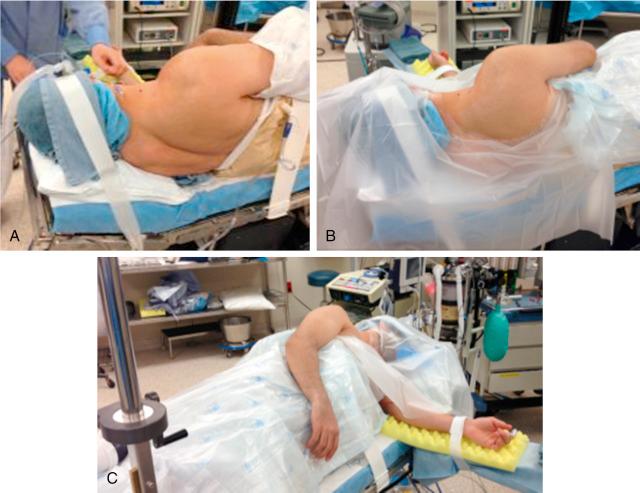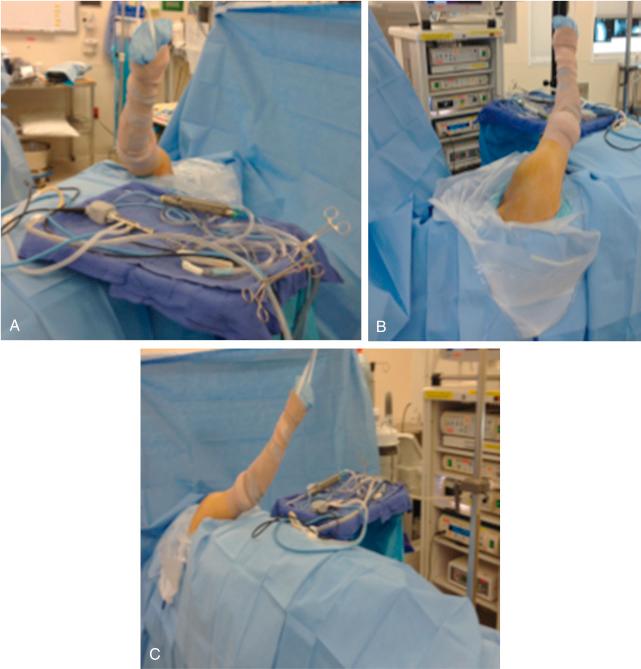Physical Address
304 North Cardinal St.
Dorchester Center, MA 02124
Arthroscopic rotator cuff repair has advanced over the last 10 years, and many of the advancements are the result of continued product development and refinement in technique. However, multiple different techniques and instruments that can lead to the achievement of an excellent outcome continue to be available. Success is much less about the “right” instrument and much more about what works for each individual surgeon. All techniques can be modified with different instruments available.
This chapter focuses on the basics of portal placement and potential instruments available to achieve a successful rotator cuff repair. The reader should keep in mind that a combination of different techniques, portals, and instruments is often necessary. There are two main positions for shoulder arthroscopy: the lateral and beach chair positions. This chapter is segmented into these two distinctions.
Patients may undergo general anesthesia, regional anesthesia, or both general and regional anesthesia. The patient is initially positioned on a standard operating room table, on top of a beanbag, in the supine position. Sequential compression devices or foot pumps should be placed on both lower extremities to decrease the risk of thromboembolic events.
Manual examination of the shoulder under anesthesia should include passive range of motion in forward elevation, external rotation with the arm at the side, cross-chest adduction, and internal and external rotation at 90 degrees of abduction. Anterior and posterior load-and-shift testing in varying degrees of glenohumeral rotation and the sulcus test should be performed and graded accordingly. Comparison with the unaffected shoulder is made as indicated by the findings.
Next, the patient is turned in the lateral decubitus position. An axillary roll is placed to protect the brachial plexus, and all bony prominences are well padded with careful attention paid to the peroneal nerve and lateral malleolus on the down leg. The beanbag is positioned to support the patient but not to obstruct movement of arthroscopic instruments that will be placed in the anterior and posterior working portals. The patient should be tilted 20 degrees posteriorly to facilitate a horizontal orientation of the glenohumeral joint. Heavy tape and a safety strap should be placed to secure the patient to the bed. Additional positioning devices may be required to support the patient in this position. A lower-body warming device is frequently used. The head and neck are secured in the midline position with care taken to avoid the eyes and ears ( Fig. 15.1 ).

The upper extremity should be prepped from the sternum to the fingertips. The arm is placed in an impervious stockinette and loosely wrapped with a self-adherent wrap. The arm is then placed in a commercially available holding device, and 5–10 lb of counterweight is typically applied to provide longitudinal and axial traction. Alternatively, axial traction may be applied by an assistant or with the use of an additional strap that is placed on the proximal portion of the arm. Sterile drapes are applied. Suction tubes, arthroscopy camera, motorized shaver, electrocautery device, light cable, and inflow tubing are all passed from the posterior aspect of the shoulder under the arm to the anterior aspect of the body. All arthroscopic instruments are then placed on a Mayo stand ( Fig. 15.2 ).

Next, the bony landmarks are marked with a sterile pen. Important landmarks to discern are the posterior “soft spot,” which is the depression palpated with the thumb posteriorly while the index and long finger stabilize the humeral head anteriorly (this is where the posterior portal will be made); the coracoid; the posterolateral edge of the acromion and scapular spine; the lateral edge of the acromion; the acromioclavicular (AC) joint; the clavicle; and the anterior joint line.
Become a Clinical Tree membership for Full access and enjoy Unlimited articles
If you are a member. Log in here